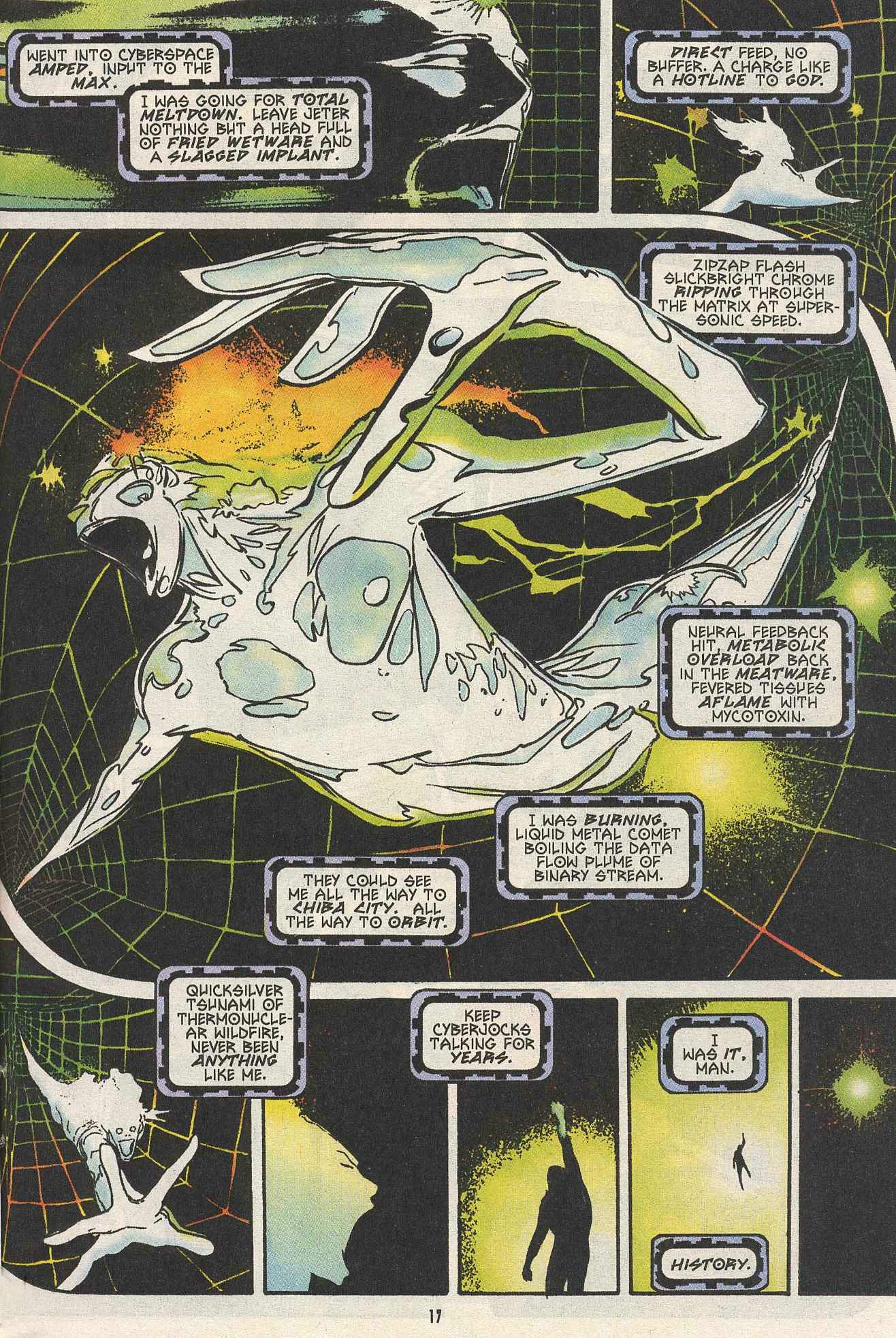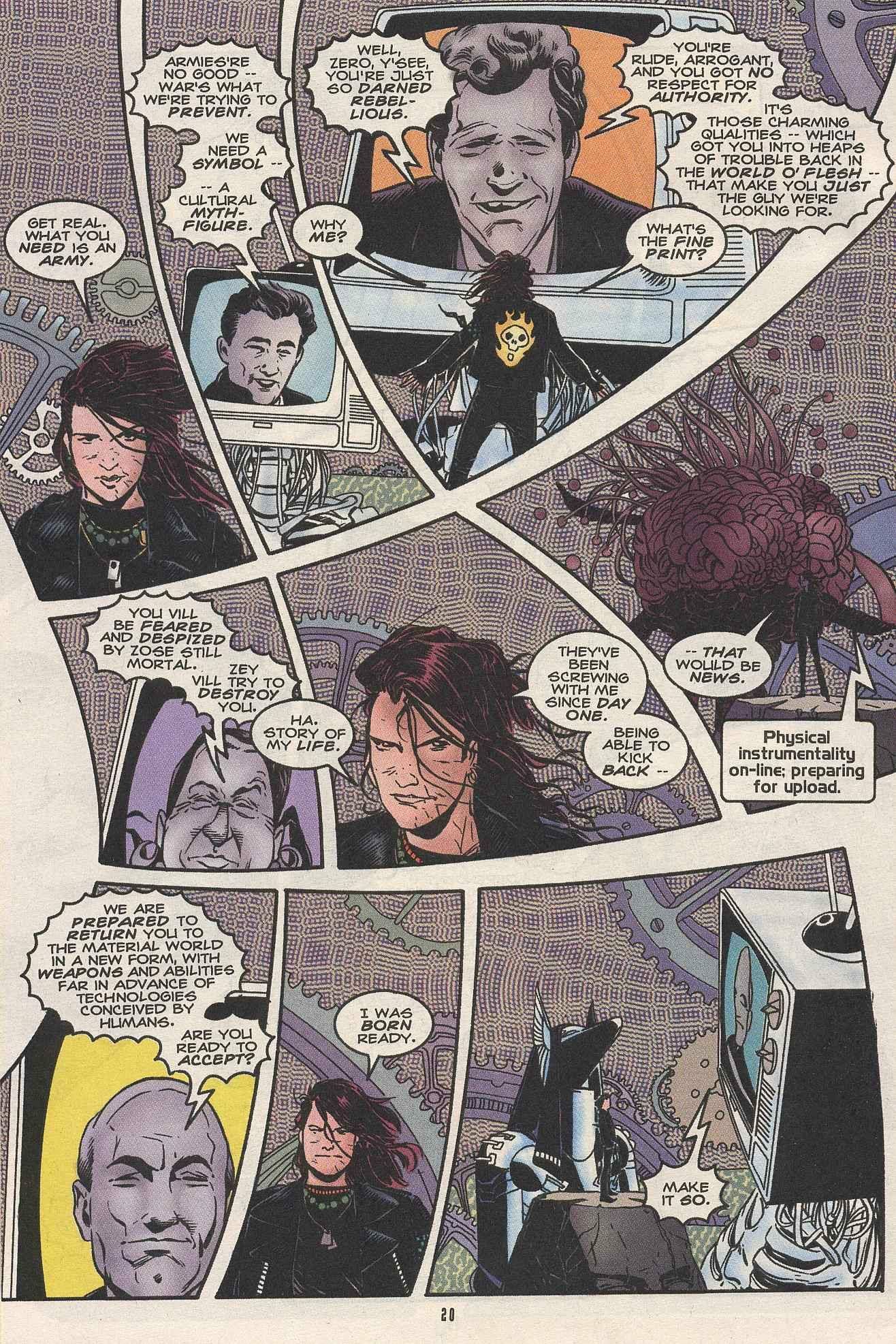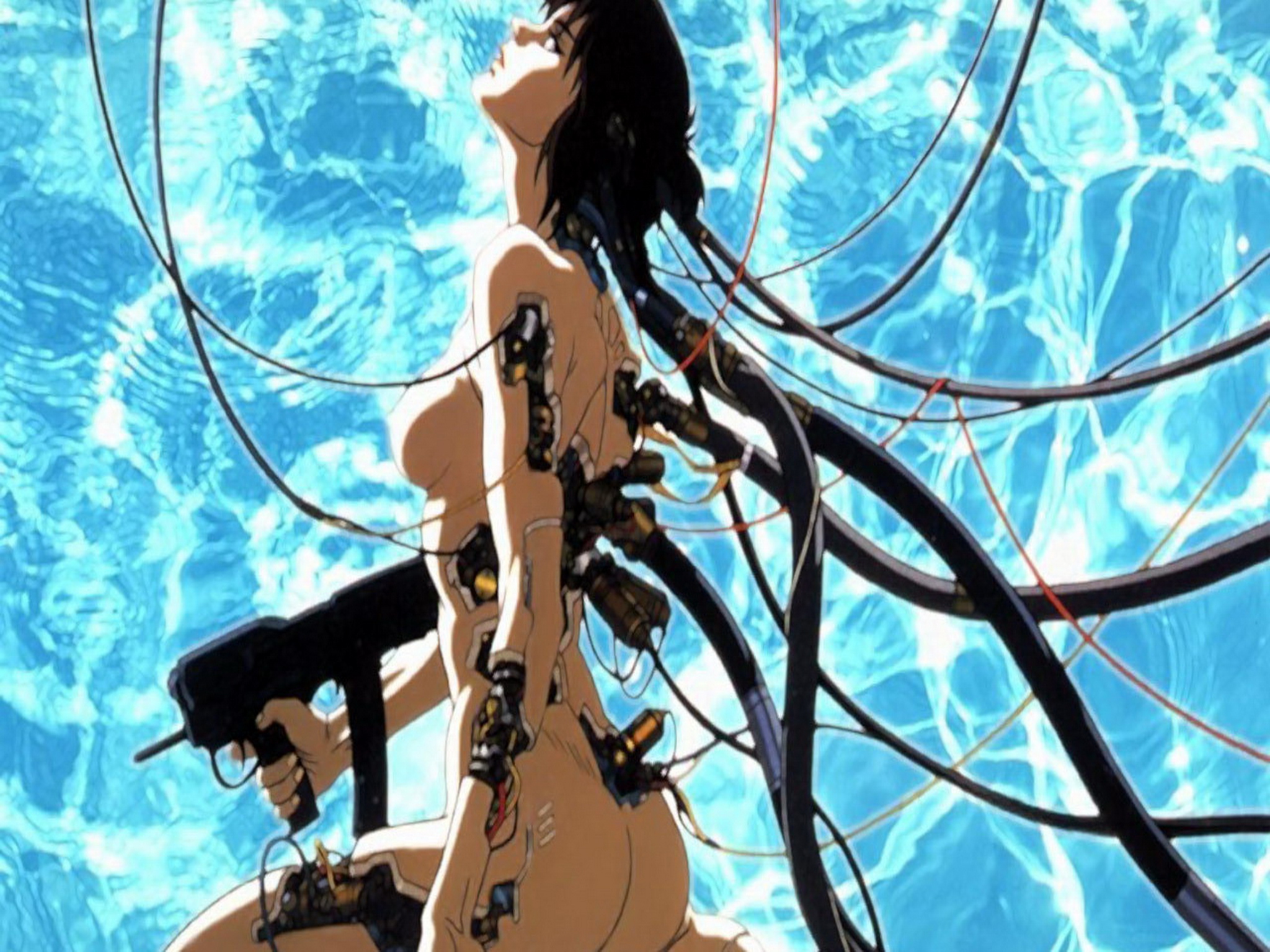The other day, Second Life celebrated its 10-year anniversary. But long before that venerable virtual world came into existence, we were dreaming up images of virtual reality and cyberspace.
Top picture: Tron vs. Tron Legacy
It seems like there are a few basic ways to represent “cyberspace” and virtual reality. You can have basic reality, with the occasional glitches or incongruities. You can create a surreal dreamscape that is clearly not “reality” as we know it. You can use actual computer graphics, or try to approximate computer graphics somehow using animation. Or you can just go for something extremely cartoony.
As computer animation and CG effects became more sophisticated, in the 1990s, the scope for film-makers and designers to create “computerized” looking worlds became greater — but by some point in the late 2000s, CG animation and motion-capture start being convincing enough that we no longer accept a virtual world that looks obviously computer-y or excessively 8-bit. To some extent, the evolution of our imagery around virtual worlds reflects our increased computing power and our greater sophistication when it comes to imagining our interactions with computers in general.
Just look at the difference between Tron and Tron Legacy.
Note: I apologise in advance if any of these images are mis-categorized, since some of the series we’re dealing with here have had lots of different installments. Also, I’m sure we left out some important stuff — please let us know what we missed below!
Welt am Draht (World on a Wire), 1973
Rainer Werner Fassbinder’s famous TV miniseries depicts a simulated world inside a supercomputer, populated with thousands of “identity units,” who believe they’re people. There are strange shrill sounds and messages pop onto the screen, but mostly the dislocation of a virtual world is conveyed through dreamlike imagery and odd camera angles, such as having the camera low to the ground, moving slowly on a dolly.






Doctor Who, “The Deadly Assassin” (1976)
This landmark episode of Doctor Who saw the Doctor going inside the Time Lord computer network, known as the Matrix — only to find a nightmarish virtual world, where he’s hunted and attacked. After a bit, the Matrix settles down into looking like a regular jungle — but at first, it’s a bit more surrealistic, with eyes appearing in cliffsides and mirrors hidden under the sand, showing clown faces.




Tron (1982)
The classic “human sucked inside the computer” movie, Tron was one of the first films to use computer graphics to help tell the story — but it also uses strange fluorescent lighting, weird sets and old-school animation and compositing to create the sense of a strange virtual environment.




Star Trek: The Next Generation (1987-1994)
There had been other depictions of holographic realities before this show came along — but this was a show that regularly depicted life inside a computer-generated environment, which looked indistinguishable from “real” matter — until, of course, the inevitable holodeck malfunction.



Ghost in the Shell: Man-Machine Interface (1991-1997)
This comic shows the world inside the computer, featuring cool vector-graphics tunnels and lots of information whizzing around — basically, the classic image that probably pops into your mind when you think of “Cyberspace.”



Lawnmower Man (1992)
The images of Cyberspace in this film actually make Tron, a decade earlier, look even slicker and more visually inventive by comparison. Instead of a representation of what a sophisticated virtual world might look like, we get a version that’s more like a cheap-looking computer game of the era.



Freejack (1992)
This movie is mostly about temporal body-snatching and car chases — but it also features a showdown between Emilio Estevez and Anthony Hopkins inside cyberspace, with the winner getting control over Estevez’s body. Instead of the cheesy computer graphics of Lawnmower Man, we get a surreal landscape with stuff rezzing and de-rezzing around us, as Hopkins requires it.




Red Dwarf, “Back to Reality” (1992)
In this episode, the crew discovers that they’ve been living inside a virtual simulation, and nothing that’s happened is real. I think. This is another storyline in which the virtual world looks just like the real one.

Ghost Rider 2099 (1994)
Instead of having a supernatural origin, this version of Ghost Rider “dies” and goes into cyberspace, where he visits a strange realm beyond most people’s understanding. And he gets reborn into a new, cybernetic body to take down the cruel and corrupt. Check out these great early 1990s depictions of cyberspace.





VR Troopers (1994)
This show from the makers of Power Rangers basically involved a similar group of helmeted teens — except that this time, they’re fighting mutants inside a virtual world.


Johnny Mnemonic (1995)
This William Gibson movie adaptation is generally regarded as a huge disappointment — but at the time, its depictions of Cyberspace were regarded as emblematic and ground-breaking.




Virtuosity (1995)
And meanwhile, this film showed Russell Crowe as a computer-generated serial killer who escapes from a virtual sushi bar, only to be hunted by an obsessed Denzel Washington.




Ghost in the Shell films and Stand Alone Complex (1995-2006)
When Ghost in the Shell came to anime movies and a TV series, the saga of Motoko Kusanagi became even more stylised and the representations of “Cyberspace” became more complex and grittier.




Serial Experiments Lain (1998)
In this classic anime, Lain explores “The Wired,” a virtual world that’s connected to everything, and discovers some haunting secrets. Some of the coolest cyber-imagery ever.




Rez (Video Game, 2001)








The Thirteenth Floor (1999)
The cyberpunk movie that completely slipped through the net, thanks to the frenzy over The Matrix. In this film, as in some other recent ones, there are multiple layers of virtual reality — but you can’t necessarily tell them from “real” reality at a glance, thus moving things closer to the sense of VR as heightened reality.



The Matrix (1999)
In retrospect, the way everything inside the Matrix has this slightly greenish hue is kind of beautiful, it adds to the sense of things being not quite right. This film comes up with some inventive ways to merge CRT computer screen imagery with “virtual” depictions of reality — and also shows how a virtual world could give you de facto superpowers.




Existenz (1999)
And the third VR movie of 1999… David Cronenberg’s mind-bending film takes a movie trope — getting sucked inside the video game — and turns it into this creepy surreal thing where video game controllers are like weird fleshy things, and you have to create a port in your spine using equipment in a gas station. The master of body horror makes the virtual feel physical, tactile, even visceral.



The Tribe (1999-2003)
In this Australian-New Zealand post-apocalyptic show, all the kids eventually get hooked on a virtual game, and people’s minds are manipulated using virtual reality.

Avalon (2001)
In this live-action movie directed by Mamoru Oshii, a woman goes inside a virtual reality game to find a hidden level — and once again, VR is dreamlike and unsettling rather than cartoony and graphics-y. For obvious reasons, this VR world looks very anime-influenced — but in fact, in the post-Ghost in the Shell world, VR looked more and more like anime in a lot of cases.



.hack (2002-present)
This complicated anime/video game franchise takes place inside a virtual MMORPG which is attacked by a virus — thus crashing all but one server, and causing disasters. In the earliest stories, a character gets trapped inside “The World” and unable to log out.



Code Lyoko (2003-2007)
In this French animated series, a group of kids travel to the virtual world of Lyoko, where they fight an evil AI called XANA and its humanoid agent, Aelita. This looks like another move back towards the cartoony end of VR depictions, especially since it’s aimed at kids.



Doctor Who, “Forest of the Dead” (2008)
Doctor Who returned to the Matrix in 1986’s “Trial of a Time Lord,” but it wasn’t until 22 years later that the show gave us a brand new virtual world (unless I’m forgetting something.) First Donna Noble and then the deceased River Song get stuck inside a simulation created by the Library, in which people can be “saved” from the Vashta Nerada. Except it doesn’t always work out exactly, and some people are imperfect copies.



Caprica (2009)
This Battlestar Galactica spinoff had a ton of ideas — but virtual reality, which looked like the least interesting part of the show at first, became the most fascinating instead. Early on, we visited a VR club where young people could fight and commit human sacrifice and have orgies. But later on, things got even more interesting when we ventured to New Cap City, a noir (and gray-tinged) version of Caprica City, in which it’s kill or be killed. Except for the unkillable Tamara Adama, that is.



Tron Legacy (2010)
This reimagined version of Tron took all the shininess of the original and gave it a more fetishy sheen — all of a sudden everything was like a bondage club instead of an old screwball comedy. The compupter graphics are miles ahead of 1982’s version, and for the first time the tradeoff between realism and computer imagery is non-existent. This is neither cartoony nor surreal, just pure video game swooshiness.



Adventure Time, “Guardians of Sunshine” (2011)
And finally, here’s another “sucked inside the video game” story — we’ve left a few of these lut, including the lamentable TV movie Scooby-Doo and the Cyber Chase. And this time around, we’ve come full-circle — the graphics are deliberately 8-bit and silly looking, because that’s how you can tell it’s the inside of a computer instead of just the regular cartoon. Plus it’s sort of retro and hilarious.

So… what did we leave out?

Comments
16 responses to “How Our Visions Of Virtual Reality Have Changed In The Past 40 Years”
Great list, awesome work. Bookmarked.
How about the movies Gamer and Surrogates, which use the real world as a virtual reality?
Cool article, i might have to watch a few of these now!
Also the only other VR world show i can think of is Sword Art Online… or maybe the movie Gamer (Bleh!)
P.s. I think it would be cool if you guys did like one article a week on each one of these show/movies just expanding on the way VR is depicted and how people interact with it and other features that each shows VR world might have.
Just a suggestion 🙂
I see what you did there with Daft Punk. 😉
The truth about Adventure Time:
http://uploads.neatorama.com/wp-content/uploads/2012/05/adventure-time-truth-500×400.jpg
Lies!
Doesn’t explain storylines that don’t include Finn & Jake 😛
FLYNN LIVES!
I think it’s a little unfair for The Lawnmower Man to be described as a cheap looking video game of its era, especially considering it was made in 1992.
For animes can’t believe you missed out on “Sword Art Online” that is a great depiction of a virtual world and how it could play on ones mind and emotions after being trapped in for such a long time
No Reboot 🙁
This.
My favouritest ever depiction of the internet is in the first few episodes (possibly even the first, I can’t remember) of Futurama. From the moment they log on and are harassed by a flock of ravenous advertisements they shoo away like hungry seagulls to the chat room in which people stand around yelling obscenities. The best part is when at one point Fry says “well, thanks to the Internet, I’m now bored with sex.”
It’s some of the most direct, sharp and spot on satire of the internet culture at the time, and to an extent, now.
And that online shooter game they play looks pretty fun too 😛
Yeah, Hermies says something like: nowadays we have a new kind of game played entirely on video, it’s called a video game.
To which Fry says something like: ohh, you mighty men of the future will have to teach me this video game
Then he proceeds to own them all. Classic episode
i know you put .hack in and i was getting worried when i didnt see it for ages, but its quite disappointing to see Sword Art Online not in there, especially cause one of the other Kotaku members wrote a review on it
Sword Art Online
Ready Player One (If you were to include books)
Terminator
Oblivion
After Earth
The list is massive of what you could put in really, they’re just the ones off the top of my head.
Summer Wars
http://en.wikipedia.org/wiki/Summer_Wars
Props for mentioning Serial Experiments Lain, such a great show!
As per usual, no mention of “VR.5”